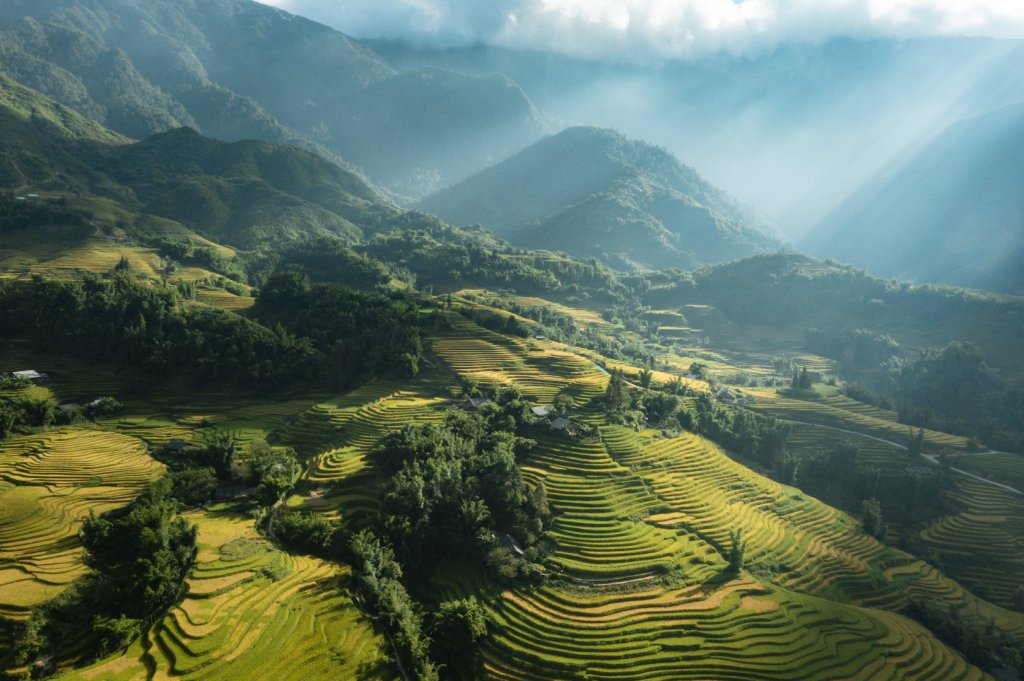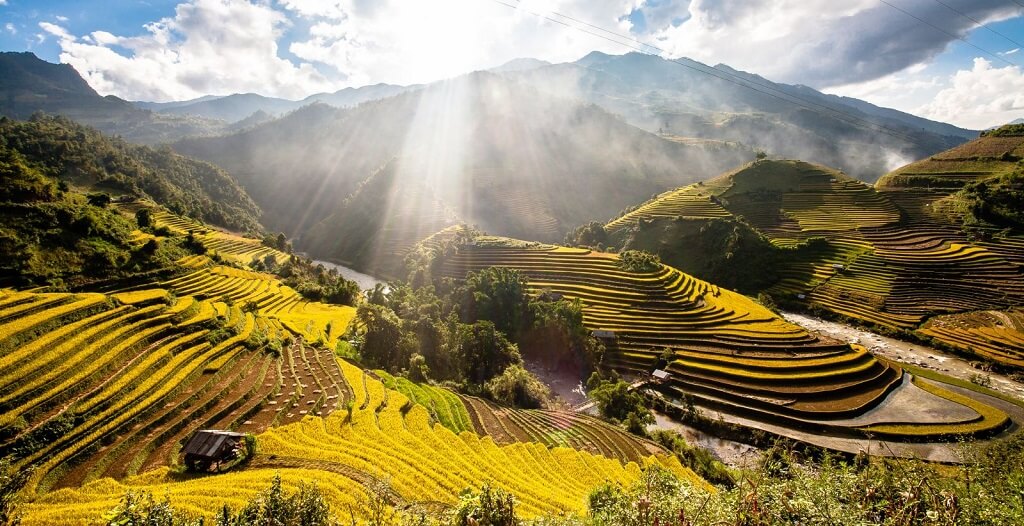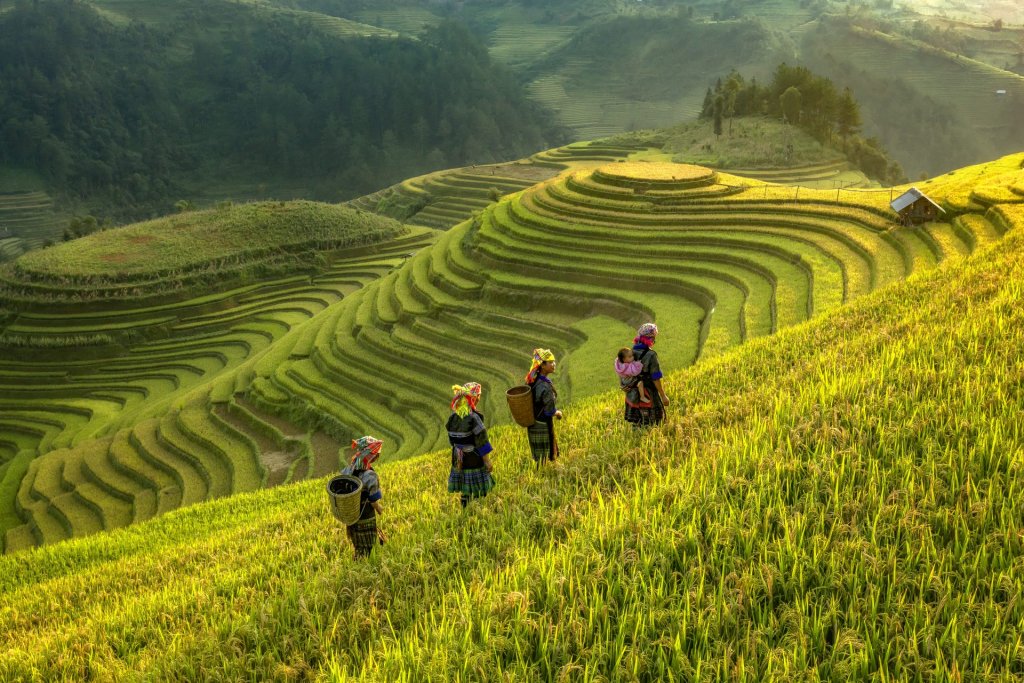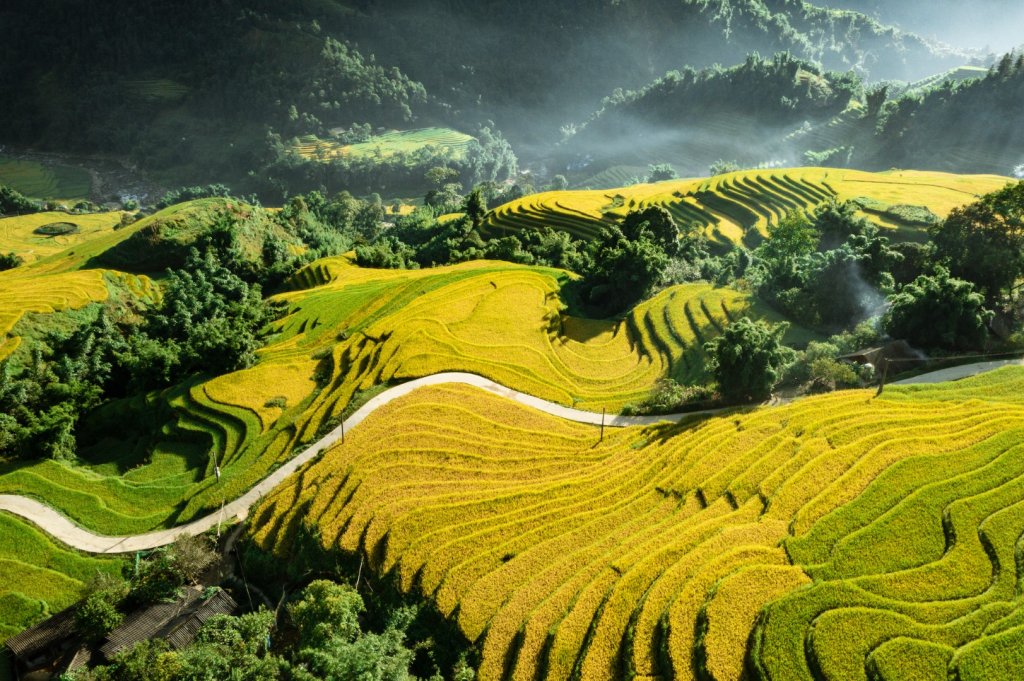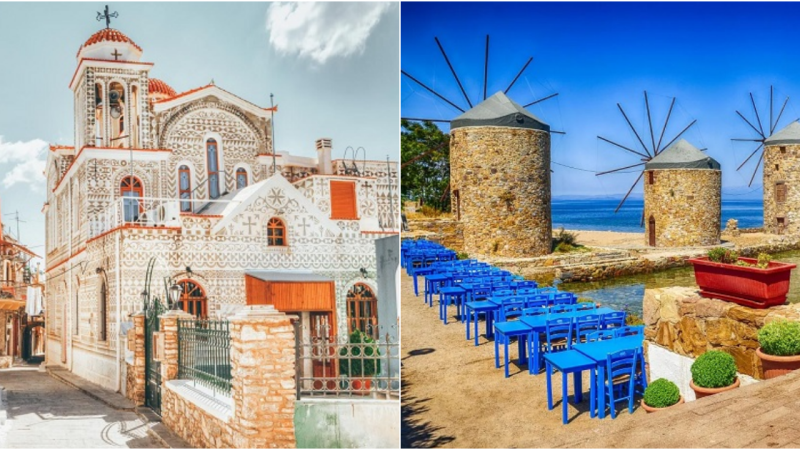Terraced Fields in Vietnam: A Spectacular Landscape
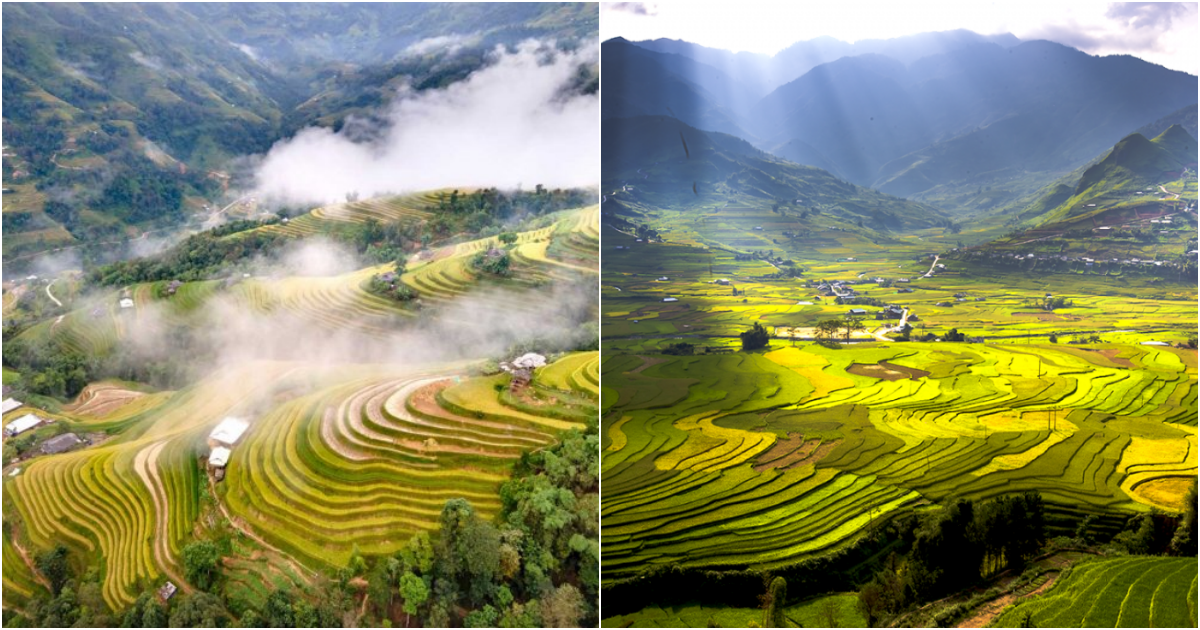
Vietnam is home to a breathtaking natural wonder known as terraced fields, which grace the mountainous regions of the country. These ingeniously designed agricultural landscapes have not only sustained the livelihoods of local communities for centuries but have also become an iconic symbol of Vietnam’s rich cultural heritage.

Terraced fields can be found in several regions of Vietnam, with some of the most famous ones located in the northwest provinces such as Lao Cai, Yen Bai, and Ha Giang. These regions are characterized by their rugged terrain, where mountains stretch endlessly and valleys lay nestled between them. The local ethnic minority groups, including the Hmong, Dao, and Tay, have masterfully transformed these steep slopes into fertile agricultural land using traditional farming techniques.
The creation of terraced fields is a remarkable feat of engineering and reflects the deep connection between humans and nature. These landscapes are built by hand, as generations of farmers have meticulously carved the mountainside into a series of flat platforms resembling giant steps or terraces. Each terrace is carefully leveled and constructed with stone walls to prevent erosion and retain water. The walls also serve as paths for farmers to navigate through the fields during cultivation and harvest seasons.
One of the most captivating aspects of these terraced fields is their ever-changing appearance throughout the year. In the spring, the fields come alive with vibrant shades of green as rice seedlings are planted, transforming the slopes into a lush carpet of vegetation. As summer arrives, the terraces are filled with water, creating a mesmerizing mirror-like effect that reflects the sky and surrounding landscapes. During autumn, the fields turn golden as the rice ripens, ready for harvest. Finally, in winter, a layer of frost or snow may cover the terraces, adding a touch of ethereal beauty to the already stunning scenery.
Aside from their aesthetic appeal, terraced fields play a vital role in sustaining local communities and preserving biodiversity. Rice, corn, and other crops cultivated in these fields serve as staple food sources, providing sustenance for both farmers and the wider population. Moreover, the terraces also act as natural water reservoirs, regulating the flow of water downstream and preventing soil erosion. The intricate network of terraces also supports a diverse ecosystem, providing habitats for numerous plant and animal species.
Recognizing the cultural and ecological significance of terraced fields, efforts have been made to preserve and promote these landscapes. Some terraced fields have been designated as national heritage sites, drawing both domestic and international tourists. Visitors can immerse themselves in the rural way of life, interact with local farmers, and gain a deeper appreciation for the labor-intensive process of cultivating these fields. Additionally, initiatives focusing on sustainable agriculture and responsible tourism aim to strike a balance between economic development and environmental conservation.
In conclusion, Vietnam’s terraced fields are a testament to human ingenuity, resilience, and the harmonious coexistence between humans and nature. These awe-inspiring landscapes not only provide a source of sustenance for local communities but also captivate visitors with their natural beauty and cultural significance. As we continue to admire and support these remarkable agricultural marvels, we ensure the preservation of this unique heritage for generations to come.
